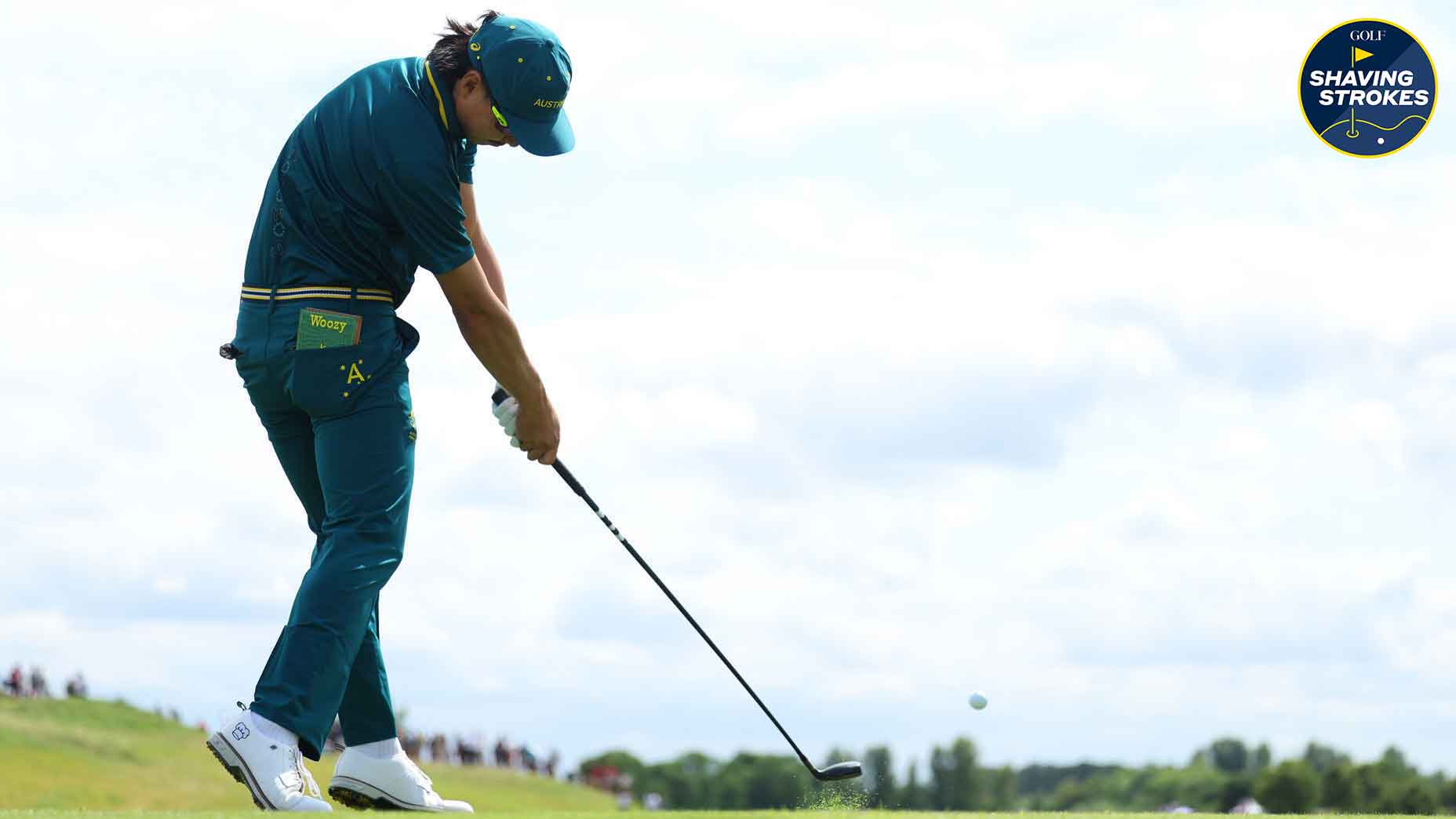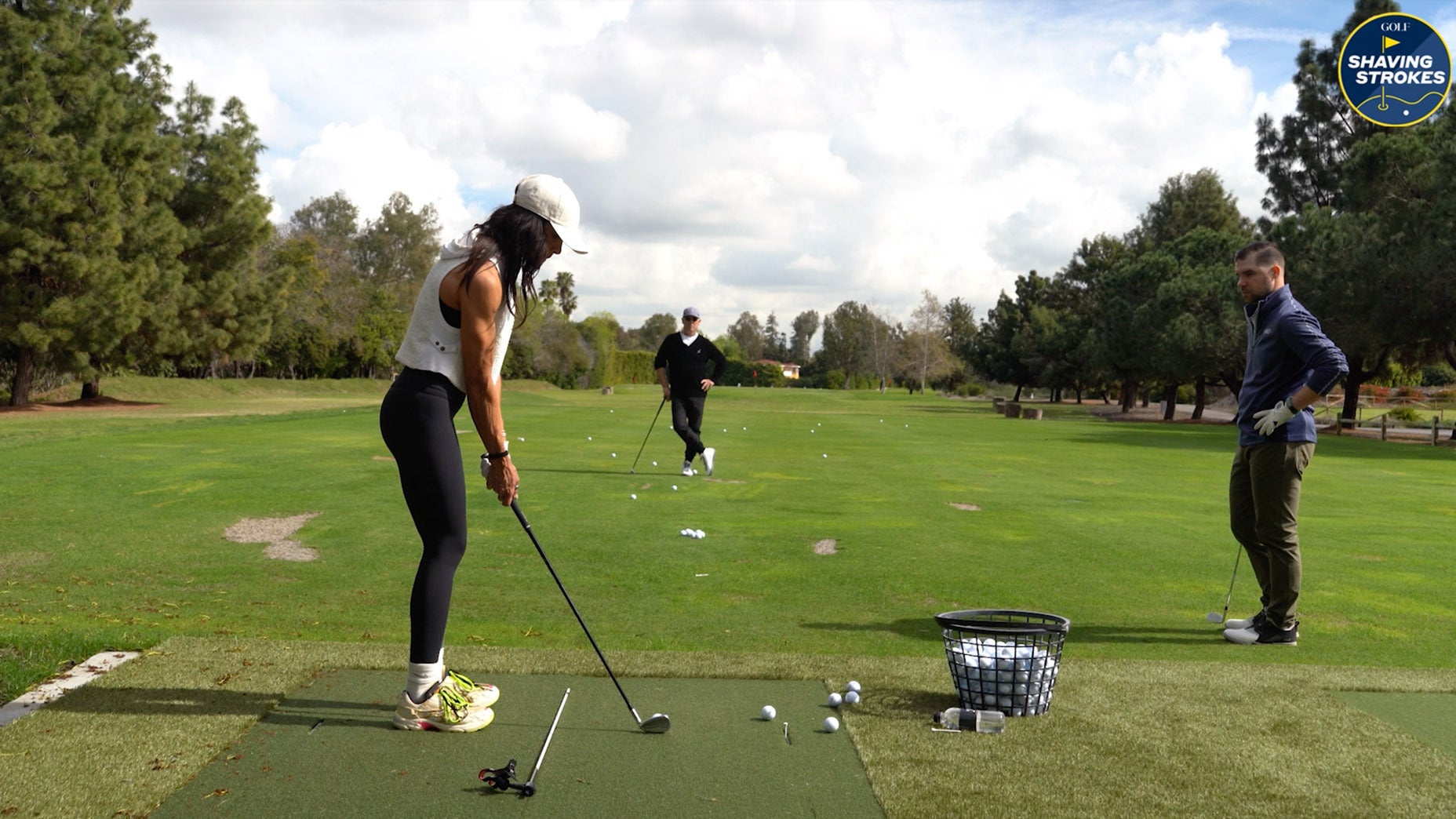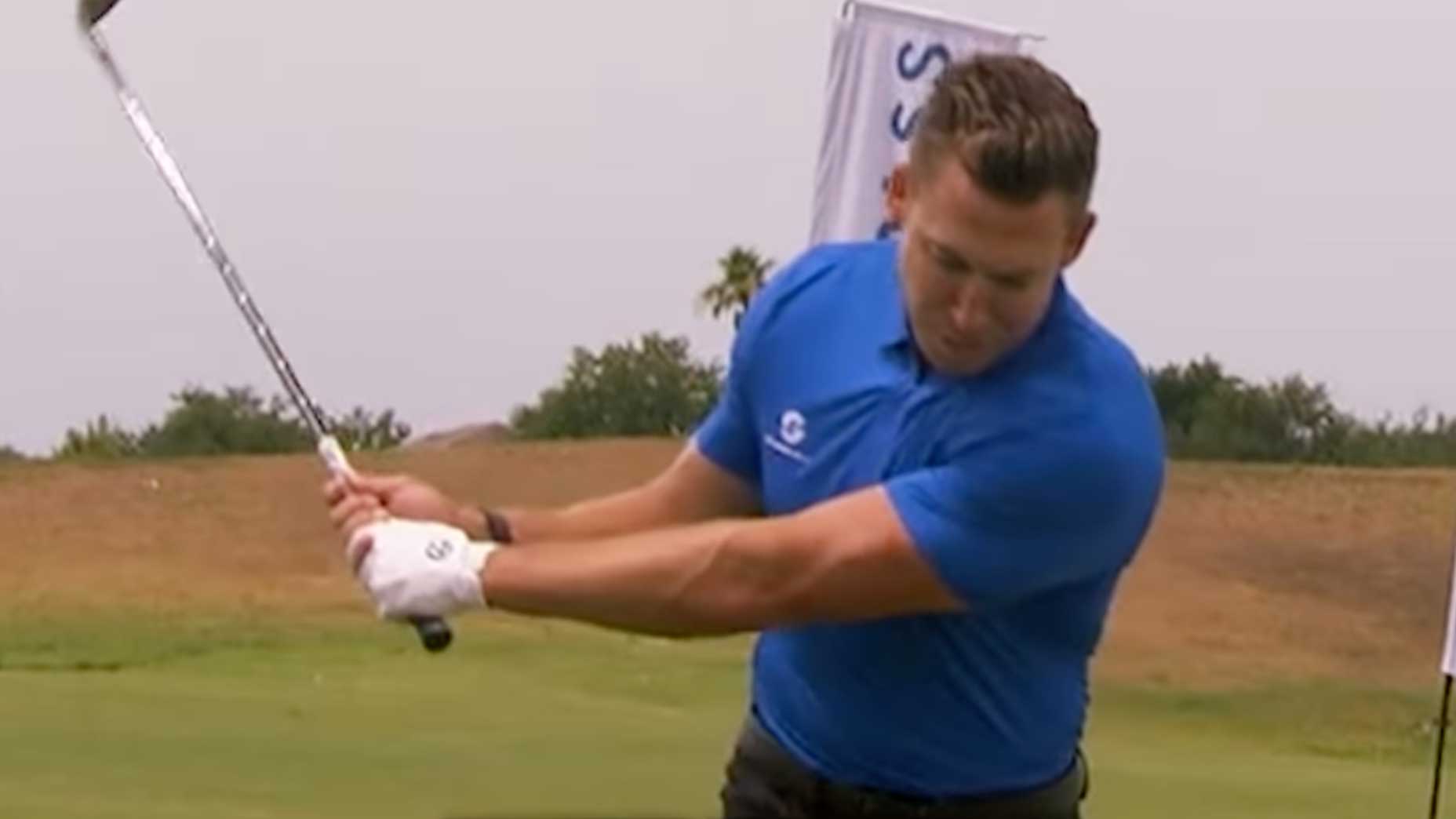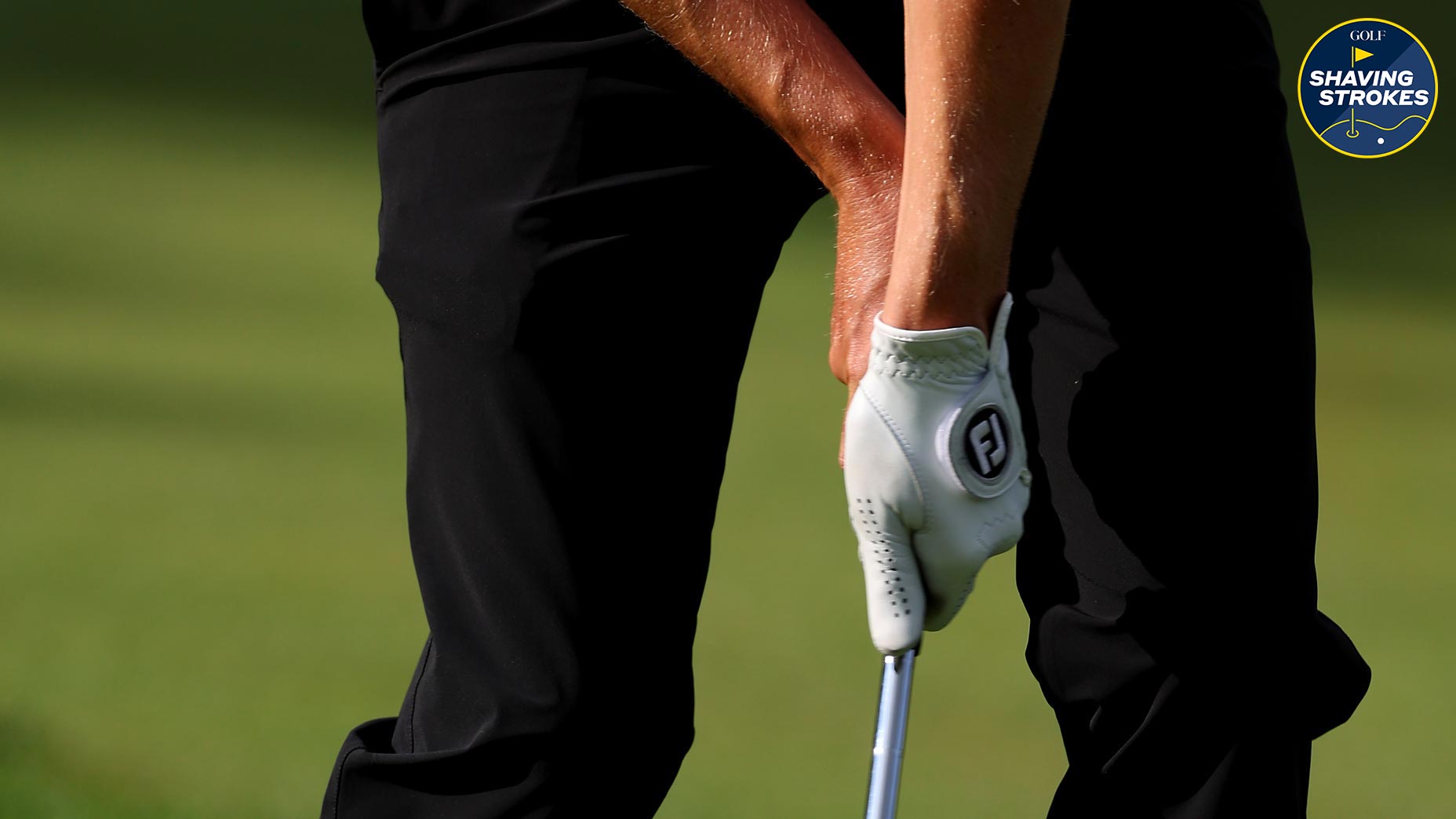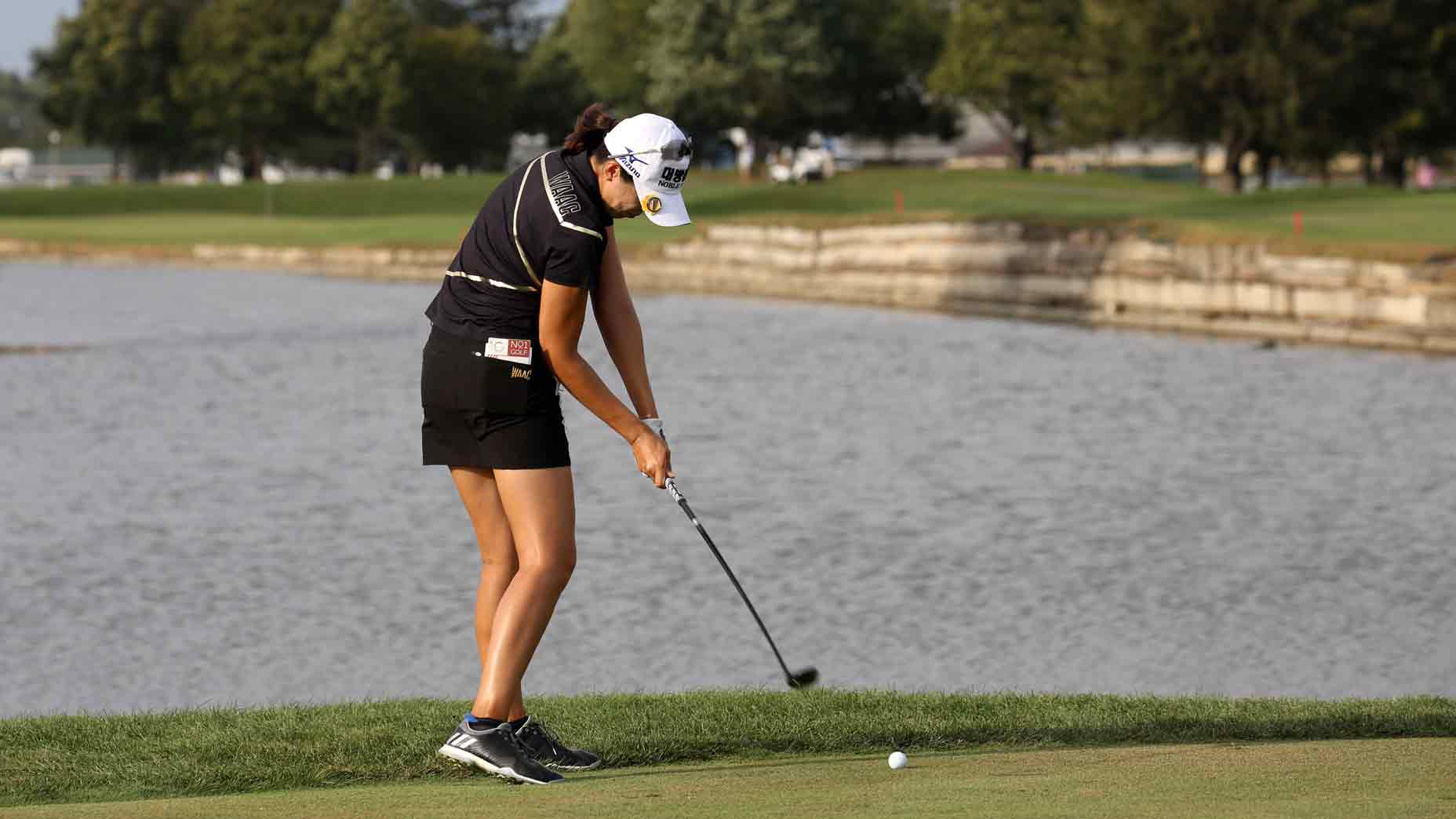My first member-guest felt like a disaster. But here’s what I learned
- Share on Facebook
- Share on Twitter
- Share by Email

The author quickly found out why a member-guest golf tournament is a different type of animal.
Nick Dimengo / Jake Paulson
Golf is hard. You don’t need a mid-handicapper with a fancy job title like “GOLF Instruction Editor” to tell you that.
But just because you know, big-picture, that it’s difficult, doesn’t mean every bogey, double-bogey, slice, hook, shank, or 3-putt is any easier to swallow. The game humbles even the best players in the world, reminding them that just one small mistake can lead to a disaster snowball, driving up scores and crushing their confidence.
That’s part of why we all play, isn’t it? To try and capture magic for one round, one hole, or, hell, just one shot! I know it is for me, and it’s why I wanted to test myself by playing in my first-ever member-guest tournament — which turned out being a tougher pill to swallow.
What I learned during my first member-guest event
It’s hard to complain when you get to play a former U.S. Open site like Chambers Bay three days in a row. Add in the fact that it was 70 degrees and sunny pretty much the entire member-guest event — a rarity for the Pacific Northwest this time of year — and the setting couldn’t be more stunning.
But golf is about more than just spectacular views and dreamy layouts: It’s about scoring low, and that’s why my first-ever member-guest tournament was a real struggle.
The format was pretty simple, with Day 1 being a 9-hole, 2-man best ball. Days 2 and 3 were both four-ball stroke play, with the scores being added up from these two rounds at the end to determine the winners.
Don’t worry, my partner and I didn’t sniff the top of the leaderboard.



Now, look, my teammate for the event was a buddy of mine who’s an 18-handicap, so with my 15-handicap, it’s not like we were sending the A-team to the damn thing. Still, we were hopeful that we could at least compete. And like every delusional golfer, there was talk about “winning it all” on the hour-long drive from Seattle to Chambers Bay.
Silly mid-handicappers, we are.
The results were so poor that I actually debated whether or not I even wanted to write this story — but if you want to see the bloodbath, you can see the final standings here. To be frank, I’m embarrassed with how I played, and know it’s not the level of golfer I am. I expect more from myself, but again, golf is hard, so maybe the golf gods were just being cruel to me as a “newbie” in the golf tournament world?
But my job is to be the voice for average golfers everywhere, sharing experiences with fellow amateurs to help break stigmas and push ourselves to try new things as golfers. So if a mid-handicapper like myself can play in a competitive golf tournament, so can you. If I need to be the guinea pig, I’m up to the task.
If you’re thinking about playing in a golf tournament for the first time, do it. Just make sure you read some of the things I learned during my first-ever member-guest tournament — they may help you perform better than I did at Chambers Bay.

Set realistic expectations
As mentioned above, my teammate and I came into the member-guest with false expectations. Neither one of us had ever played in an event like this before, so we had no idea what to expect. We were excited, anxious, nervous, and optimistic.
But with great expectations can come great disappointments, and we felt even more pressure to perform after every shot — both good and bad. We didn’t want to ruin a perfect drive, so we pressed on our approach shot. Likewise, we wanted to hit hero shots if our tee shots left us in trouble, which only compounded any issues.
Stay within yourself and just play your game. It’s not easy to do, but to be successful in a tournament setting, it’s a must.
Embrace your imposter syndrome
When you’ve got eyeballs on you, it’s easy for the golf anxiety to kick into high gear — which we all experience that at one point or another. Now when those observers are golfers who happen to be strangers, well, you find yourself pressing a little bit more.
During our tournament, we found ourselves trying to go shot-for-shot with the people we were playing with, even when we knew we didn’t have the same ability.
So just because a guy bombed his driver 320 yards to carry one of Chambers’ wicked bunkers, doesn’t mean we should be hitting that type of shot. Instead, it’d be smarter to club down to something more comfortable, poke a tee shot into the fairway, and avoid mistakes that foolishly added strokes. Sadly, we didn’t do that.
Distract yourself with literally anything but golf (but know your audience)
For me, this was the biggest difference between a casual round of golf and playing in a member-guest golf tournament — because the competition isn’t casual.
When I’m playing with friends on a random Saturday, we’re busy doing little side bets or busting each other’s chops, keeping the mood light, fun, and relaxed. While we never got paired with any jerks during this member-guest event, it was clear that these guys didn’t want any side conversations. They were focused on their next shot, or dialing in their mentality before a big putt.
It was a major change from what my teammate and I were used to, and really threw both of us for a loop. Instead of settling in and playing relaxed, we allowed that added pressure to mess with our heads, which, ultimately, threw us off our game. The rounds were fun, no doubt, but they were certainly more serious.
Utilize any handicap strokes on a hole
Another difficult thing to adapt to was the free strokes my teammate and I got on certain holes. For instance, since he’s an 18-handicap and I’m a 15-handicap, there were times when a long par-5 was actually a par-6 for us (meaning our score would be a net-par if we scored a six, and a net-birdie if we scored a five).
Unfortunately, our games never really adapted to that advantage.
Instead, we pressed and tried to play the hole as marked on the scorecard — a real disadvantage given our abilities. If you’re getting free strokes because of your handicap index, adapt your game to play safer and not so aggressive. You don’t need to do so on every hole, but pick your spots, use smart course management, and don’t get discouraged if it takes you an extra shot to reach the green.
Preparation is great, but execution is greater
“I feel so good, man, I hit the ball excellent on the range,” I’d tell my teammate before each round of the member-guest event.
Now ask me how that translated to the course.
Don’t get me wrong, I hit some good shots during the golf tournament. But there were way too many times when the intimidating layout that Chambers presents just totally wrecked me.
Like many amateurs, I focused on the results of my range session pre-round, rather than the process. I bombed driver to try and give me confidence, but ignored practicing the short game and putting — which is where strokes added up in a hurry during the event.
I only worked on the strengths of my game on the range, and dismissed the weaknesses. So when it was time to execute those tough shots on the course, I had little chance to see success.
The short game matters most in member-guest golf tournaments
Speaking of the short game, boy does it make a difference in these types of tournaments. We’ve all heard the expression, “drive for show and putt for dough” before, and when it comes to competitive golf, this couldn’t be more true.
The pins at Chambers were tucked in corners, and the slopes on and around the greens were unforgiving, so the groups that had touch from 50 yards in were the ones who excelled.
It’s fun to try and show off your strength from the tee, but when you’re putting from 20 feet to save par and the other group’s got an 8-footer for birdie, a little added distance with the driver isn’t as cool.
So if you really want to compete in a member-guest golf tournament, I suggest working on your short game and putting before a round to really dial it in. Had I done that, who knows, maybe the disastrous results would’ve looked — and felt — a little different?
While my teammate and I both had our ups and downs throughout — and yeah, more downs than ups — overall, it was an unbelievable experience. It gave us a chance to play golf at a top-rated course, meet new people, and test ourselves as golfers.
And you know what? We’ll be back next year better prepared and ready to actually go win this thing. Call us delusional…but that’s just part of being a golfer.

Swing Caddie SC4 Simulator + Launch Monitor
$549.99
View Product
Latest In Instruction

Nick Dimengo
Golf.com Editor


